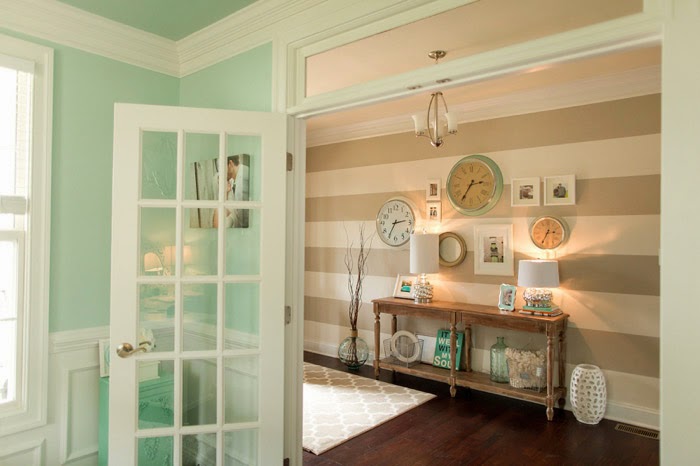 |
| Source: Michelle Workman |
White walls dominate the design world currently, and most home stagers advise against taking interior risks in homes on the market. However, current homeowners not selling in the near future can and should paint their interiors to reflect personal styles. Even so, splashing fresh hues on walls isn’t something to do on a whim. Selecting new palettes requires ample research and debate to ensure a satisfactory outcome. But first, homeowners must vanquish the negative connotations behind colorful abodes.
To overcome color fear, consider these five tips.
1. Determine Personal Style
When shopping, most people gravitate toward fabric colors they prefer wearing. Elect paint colors that mimic personal wardrobe to complement mood and personality. Stepping out of the box is encouraged, but comfort and relaxation should come first. Use common clothing shades as the base colors for interior designs, and then add daring pizzazz in small, bold splashes.
2. Research Schemes
Once homeowners determine the best fundamental shades for their dwellings, they should consider secondary colors. For instance, individuals preferring dramatic looks might gravitate toward opposing
colors such as blue and orange, red and green or violet and yellow. Also referred to as complementary colors, pairs should consist of one chief shade and one counterpoint showcased through accessories and accents. Use standard color wheels to determine optimal combinations, or review online design boards to gather ideas for chic, eclectic color arrangements.
3. Collect Samples
No two rooms are alike, even painted the exact same color. Sun exposure, artificial lighting types and dimensions all create unique versions of the same paint. Therefore, relying solely on friends’ homes or images online to figure the best shade for a particular space is discouraged. Avoid wasting money on paint cans full of undesired tints by requesting samples at local hardware stores. Testers come in miniature cans and cost around $3 per container, which is a major savings compared to $30 for full-size gallon cans.
4. Test First
After purchasing desired samples, apply paint in small patches on various walls to see if color shifts throughout the day. To save time, homeowners can purchase “small walls,” which are paint sample boards with adhesives backs. These innovative do-it-yourself tools allow homeowners to move and stick potential colors to observe various light differentials without actually painting walls.
5. Use Accents
Painting all four walls of rooms in a single, bright shade might be difficult for neutral-loving homeowners. Rather, consider applying paint to one focal wall. Landlords sometimes require their tenants to repaint leased homes in original shades prior to moving out, so accent walls are viable options for leaseholders aiming to avoid unnecessary work. Additionally, white wainscoting covering the bottom third of walls helps limit the overwhelming saturation of color for homeowners who prefer consistent looks instead of accent walls. Wainscoting is more traditional than contemporary accent walls at home.
Trial and error is the key to selecting the perfect palette, and homeowners’ tastes likely change throughout time regardless of current selections. Therefore, don’t be disappointed when first, second or third selections don’t work out in the end.
By Jennifer Riner of Zillow







































